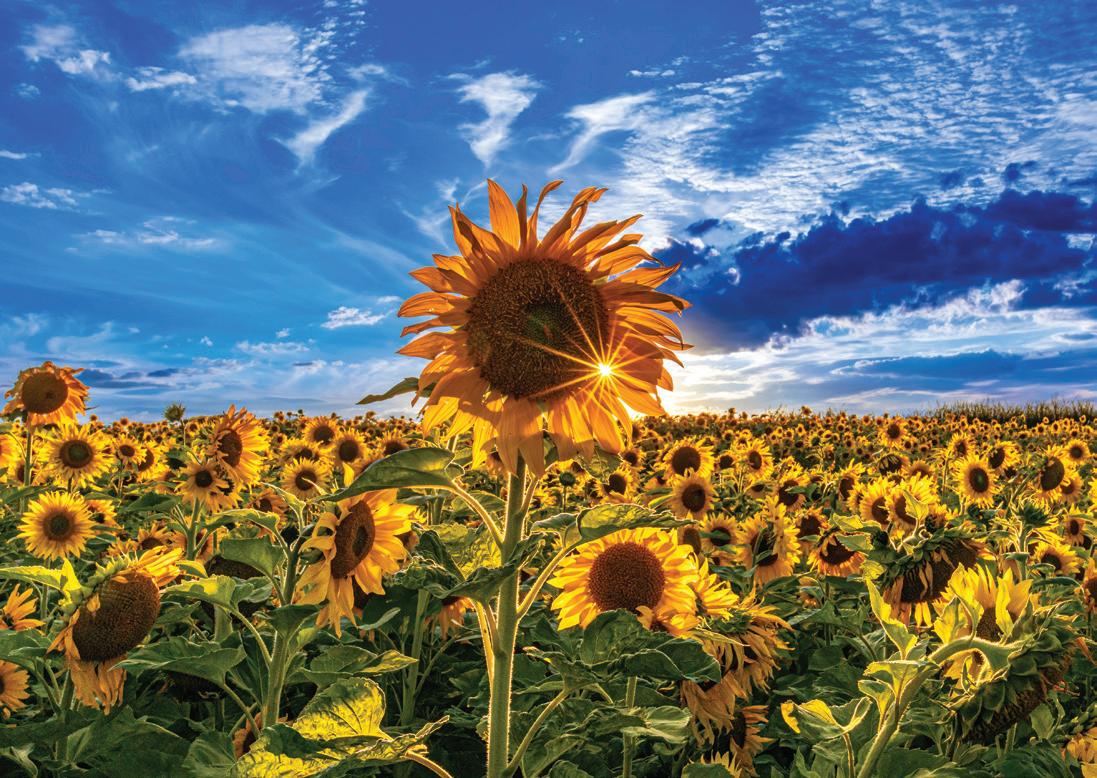
2 minute read
You’re a of Vision Ho pe
BIG, BOLD AND VIBRANT – the sunflower never fails to deliver uplifting vibes. Although we’re a while off seeing this flower in full bloom, over the last year they have become well associated with war-torn Ukraine. Adopted as the symbol of the country’s spirit and identity, sunflowers are Ukraine’s national flower.
So as Liverpool hosts the Eurovision Song Contest on behalf of Ukraine and the city parties like never before, I’d like to invite you to grow a sunflower or two. This gesture would not only serve as a sign of our solidarity with Ukraine but without dampening the mood, a stark reminder that when the fun is over here, Ukraine will still be very much at war.
Advertisement
Like poppies and cornflowers, sunflowers are flowers of the fields and are deeply rooted in Ukraine’s cultural heritage. They are often seen at festive gatherings and weddings as part of the Vinok, a traditional Ukrainian wreath worn by girls and young women.
Heather Marsh on the beauty and significance of Ukraine’s national flower
Aside from their use as fashion accessories, sunflowers are a valuable part of the Ukrainian economy – the country is the world’s biggest exporter of sunflower oil.
Thanks to its rich soil and long dry summers, sunflowers are grown in abundance everywhere and by everyone in Ukraine, with an estimated 6.5 million hectares of sunflower crops produced each year.

Every part of the plant is used to its full capacity – the seeds have long been a popular nutritious snack whilst flour is made from grounding the seeds and of course, the oil is used in cooking and low-fat spreads. What you might not know, however, is that Ukraine produces vast quantities of sunflower honey and it’s thought to be the most popular kind of its type.
After Russia’s full invasion last year, the number of sunflowers being planted in Ukraine dropped off dramatically – as did its production of honey – with many hives left unattended as beekeepers went off to fight.
n FIELDS OF GOLD
The flag of Ukraine was officially re-adopted in January 1992 following the collapse of the Soviet Union. It bears two horizontal bands of blue and yellow representing Ukraine’s wide blue skies above and the yellow fields of wheat and sunflowers below.
After the Chernobyl disaster in 1986, the Ukrainian people planted sunflowers in the areas affected by nuclear fallout. Not only did these flowers represent hope and a sign of renewal but amazingly, they removed radioactive elements from contaminated soil.
Meanwhile, in early June 1996, defence ministers from Ukraine, Russia and the USA met at a missile base in southern Ukraine to celebrate Ukraine giving up its nuclear weapons. Silos gave way to sunflowers as symbolic seeds were planted during an emotional ceremony in front of the world’s media.

Given its cultural and historical significance, it’s no wonder the Ukrainian people hold the sunflower so close to their hearts and it’s still not too late in the year to plant one of your very own.

n GROWING SUNFLOWERS
The sunflower is arguably one of the easiest flowers to grow, with its no-nonsense large seeds making planting mere child’s play.
Sunflowers come in a range of different sizes from the Titan or American giant which can reach up to four metres tall, right down to smaller varieties like Big Smile and Tigers Eye which won’t climb any higher than 30-40 cm.


Once you’ve picked your variety, start by sowing the seeds individually in small pots of multi-purpose compost – watering lightly and putting them on a sunny windowsill to start them off. Once they reach 4-5 cm you can place them into a larger pot. However, if you want to grow a real giant, you’ll need to plant them out. At this time of year, you can plant the seeds out directly – a sheltered sunny spot against a south-facing wall is ideal.
As your sunflower grows taller you may need to support it with a stake or cane, tying it loosely to the plant stem with string. You don’t have to worry too much about watering your plant either as sunflowers can tolerate dry hot climates and once established usually thrive.










